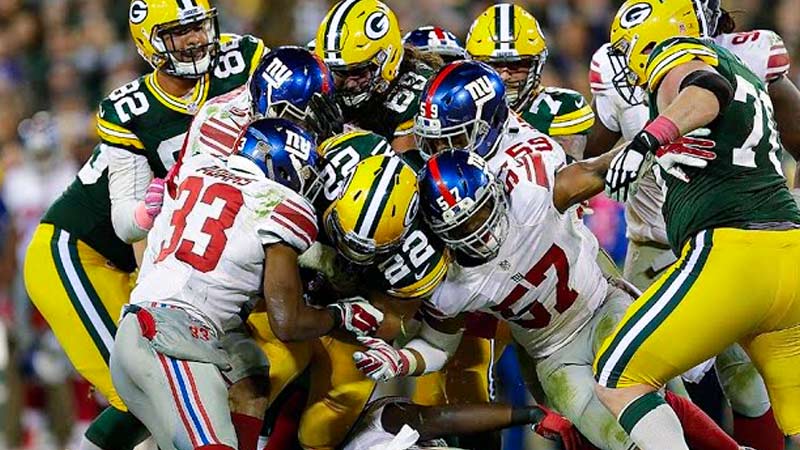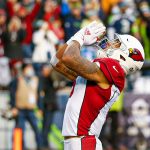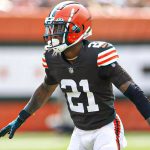Football, with its blend of strategy, athleticism, and physicality, captivates fans around the world. Among the many techniques that players employ, “pushing” stands out as a crucial aspect of both offense and defense.
However, navigating the rules around pushing is essential to maintaining fair play and ensuring the safety of all participants.
In this guide, we’ll delve into the intricacies of football pushing rules, shedding light on common questions and misconceptions. So, stay focused till the end.
What Does Pushing Mean in American Football?
In American football, “pushing” is not a common or recognized term within the sport’s formal rules and terminology. The game primarily involves strategies like running, passing, blocking, and tackling. Players use various techniques to gain yardage and score points.
Offensive players aim to advance the ball down the field while the defensive team strives to stop their progress. Blocking involves players using their bodies to protect the ball carrier or create a path for runners.
Tackling is the act of bringing down the ball carrier. While pushing can be part of these actions, it’s more accurate to describe them within the context of running plays, passing plays, blocking schemes, and defensive tactics.
Football Pushing Rules
In American football, “pushing” isn’t explicitly defined as a standalone rule, but there are regulations related to player contact and pushing in various situations:
Blocking
Offensive players use controlled pushing techniques to impede defenders and create open lanes for ball carriers. However, there are rules against illegal blocks, such as blocking from behind, using hands to the face, or hitting an opponent above the shoulders.
Pass Interference
Defensive players are not allowed to excessively push, hold, or interfere with offensive players who are attempting to catch a pass. This helps maintain fair competition and prevent unfair advantage.
Offensive Holding
While not a direct “pushing” action, offensive holding involves impeding a defender’s progress by grabbing or obstructing them. This is a penalty that can set the offensive team back in terms of yardage.
Personal Fouls
Players are not allowed to use excessive force, including pushing, when tackling an opponent. Such actions can result in personal foul penalties.
Unsportsmanlike Conduct
Deliberate and unnecessary pushing or shoving beyond the context of the game can lead to unsportsmanlike conduct penalties.
It’s important to note that while pushing and physical contact are inherent in the game, there are limits to ensure player safety and fair play. The specific rules may evolve and be interpreted differently based on the discretion of game officials and any rule changes implemented by the league.
Reasons for Pushing in Football
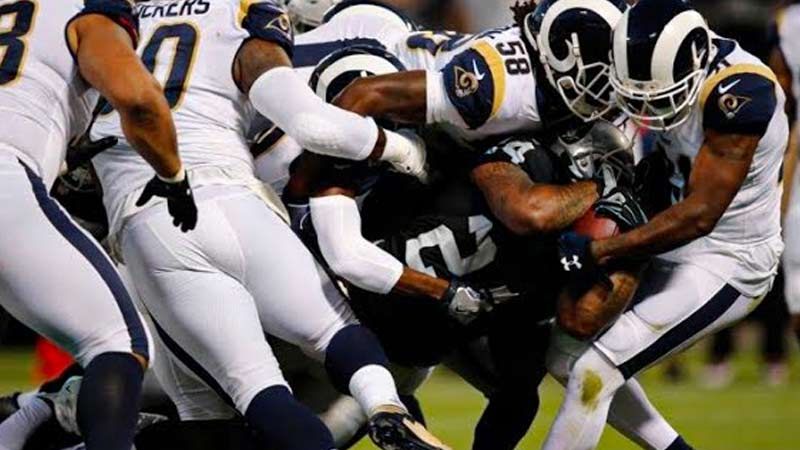
Pushing in football can occur for several strategic and tactical reasons, both on offense and defense:
Offensive Pushing
- Blocking: Offensive linemen use pushing techniques to create running lanes for the ball carrier or provide the quarterback with time to pass. Pushing defenders away from the intended path helps the offense gain yards and control the game’s tempo.
- Screen Plays: Offensive players might push defenders away from the intended receiver on screenplays, where a short pass is thrown behind the line of scrimmage. This creates space for the receiver to catch the ball and potentially gain more yardage.
- Goal-Line Situations: In short-yardage situations near the opponent’s goal line, pushing is used to create a surge to push the ball and the ball carrier into the end zone for a touchdown.
Defensive Pushing
- Pass Rush: Defensive linemen and linebackers often use pushing techniques to pressure the quarterback during a pass play. By pushing the offensive linemen back, they disrupt the pocket and force hurried or inaccurate throws.
- Defending the Run: Defenders push against offensive linemen to shed blocks and tackle the ball carrier behind the line of scrimmage. This disruption can lead to tackles for loss and negative yardage for the offense.
- Press Coverage: Defensive backs sometimes use a controlled push at the line of scrimmage to redirect the path of receivers and disrupt their timing with the quarterback. This can throw off the rhythm of passing plays.
- Defensive Line Play: Pushing is also used to gain leverage and create separation at the line of scrimmage, allowing defenders to read the play and react more effectively.
In both offensive and defensive scenarios, pushing is a crucial component of the physical battles that determine the outcome of a football game. However, it’s important for players to stay within the boundaries of the rules to avoid penalties and maintain the integrity of the game.
Consequences of Pushing in Football
Pushing in football can lead to a range of consequences, both within the game and in terms of penalties imposed by referees. The effects can vary based on the context and intent of the push:
Legal Pushing
- Advantage Gain: Properly executed pushing techniques, such as offensive blocking or defensive pressure, can lead to significant strategic advantages. Offensive linemen can create running lanes or protect the quarterback, while defensive players can disrupt plays and pressure the quarterback.
- Yardage Gains: Pushing during running plays can help ballcarriers gain additional yardage by driving defenders back or creating openings in the defense.
- Field Position: Proper pushing can contribute to improved field position for the pushing team, allowing them to control the game’s tempo and increase scoring opportunities.
Illegal Pushing
- Penalties: In cases where pushing crosses the line into illegal actions, penalties can be assessed. This can result in the team being pushed back in terms of yardage or gaining yardage, depending on the situation. For example, offensive holding or unnecessary roughness due to pushing can lead to penalty yardage.
- Loss of Down: Offensive pass interference, which involves illegal pushing or obstructing of a defender during a pass play, results in a loss of down.
- Personal Fouls: Excessive or unnecessary pushing can lead to personal foul penalties, resulting in substantial yardage penalties and potential ejection from the game.
- Player Ejections: In extreme cases, especially when pushing escalates into a fight or displays unsportsmanlike behavior, players can be ejected from the game.
- Team Disruption: Repeated or untimely pushing penalties can disrupt a team’s rhythm and strategy, making it challenging to execute plays effectively.
- Reputation Impact: Frequent involvement in pushing-related penalties can tarnish a player’s reputation and affect their standing within the league.
- Game Momentum: The consequences of pushing can influence the overall momentum of the game, either in favor of the team executing effective pushes or against the team committing penalties. So, pushing in football can lead to both positive and negative outcomes, depending on whether the actions are within the rules and executed effectively.
It’s crucial for players to understand the boundaries of legal pushing and to avoid engaging in actions that lead to penalties and potential game-altering consequences.
Penalties for Violating Football Pushing Rules
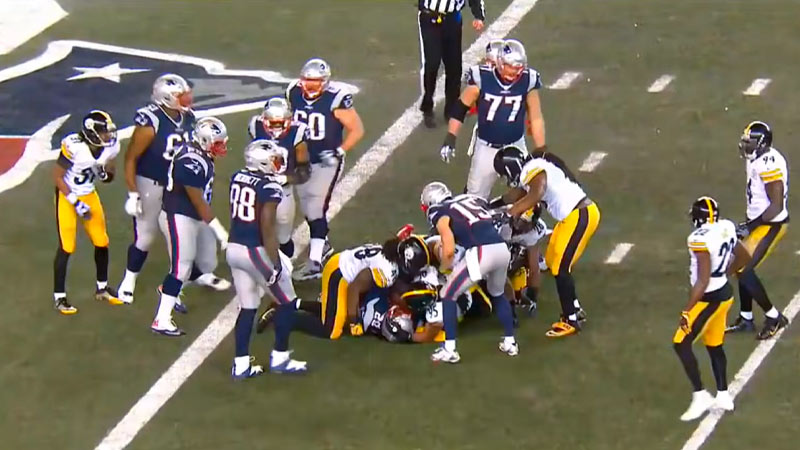
Violating football pushing rules can result in various penalties, depending on the specific circumstances and the level of infraction. Here are some common penalties for pushing-related rule violations:
Offensive Holding
This penalty is called when an offensive player uses their hands to hold or restrain a defensive player, impeding their ability to make a play. The penalty typically results in a 10-yard loss from the spot of the foul and a replay of the down.
Offensive Pass Interference
Offensive pass interference occurs when an offensive player illegally pushes, obstructs, or interferes with a defensive player who is attempting to catch a pass. The penalty results in a loss of down and a 10-yard penalty from the previous spot.
Personal Foul – Unnecessary Roughness
If a player engages in excessive or unnecessary pushing or shoving beyond the context of the play, they can be penalized for unnecessary roughness. This penalty typically results in a 15-yard loss from the spot of the foul.
Personal Foul – Unsportsmanlike Conduct
Engaging in pushing or other unsportsmanlike behavior can result in an unsportsmanlike conduct penalty. This penalty usually leads to a 15-yard loss from the spot of the foul and, in some cases, potential player ejection.
Defensive Holding
Defensive holding occurs when a defensive player holds or restrains an offensive player, affecting their ability to run their route or make a play. The penalty results in a 5-yard gain for the offense and an automatic first down.
Roughing the Passer
If a defensive player pushes or tackles the quarterback after they have released the ball, they can be penalized for roughing the passer. This penalty usually results in a 15-yard gain for the offense and an automatic first down.
Unsportsmanlike Conduct – Taunting
Taunting or engaging in unsportsmanlike behavior, such as pushing or shoving opponents in a taunting manner, can result in an unsportsmanlike conduct penalty. This penalty usually results in a 15-yard loss from the succeeding spot.
It’s important to note that the specific rules and penalties can vary depending on the football league and its rulebook.
Additionally, repeat violations or particularly egregious actions can result in ejections from the game. Teams and players need to adhere to these rules to ensure fair play and maintain the integrity of the game.
FAQs
What exactly constitutes “pushing” in football?
Pushing in football refers to physical contact that involves using force to affect the movement or positioning of opponents. It can occur within various contexts, such as blocking, tackling, and maintaining position during plays.
Are there limits to pushing during plays?
Yes, there are strict boundaries to ensure fair play and player safety. While pushing is inherent in the game, certain actions, like offensive holding, pass interference, or unnecessary roughness, can lead to penalties and impact the game’s outcome.
How does pushing contribute to offensive plays?
Pushing plays a vital role in creating opportunities for the offense. Offensive linemen use controlled pushing to create running lanes for ball carriers and protect quarterbacks. Proper pushing techniques contribute to gaining yards and controlling the game’s tempo.
Can defenders use pushing as well?
Absolutely. Defenders utilize pushing techniques to disrupt plays. Defensive linemen push to penetrate the offensive line, linebackers push to pressure quarterbacks, and defensive backs use controlled pushes to redirect receivers’ routes.
What are the penalties for violating pushing rules?
Violating pushing rules can result in penalties that vary based on the specific infraction. These penalties include offensive holding, pass interference, unnecessary roughness, and unsportsmanlike conduct. Consequences range from yardage losses to automatic first downs and potential player ejections.
Wrapping Up
The nuances of football pushing rules are crucial for both players and fans alike. We hope we have covered all the essential facts on the topic.
While pushing is a fundamental aspect of the sport, it must be executed within the boundaries of fair play and respect for opponents.
Properly harnessed, pushing contributes to the excitement and dynamics of the game, shaping the outcomes of each play and ultimately, the entire match. Thank you so much for being with us.

